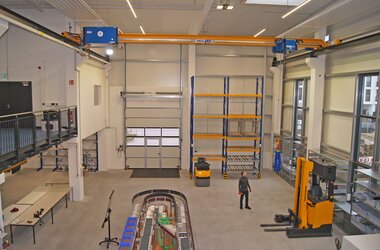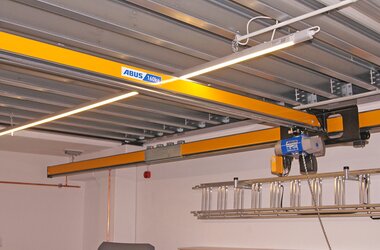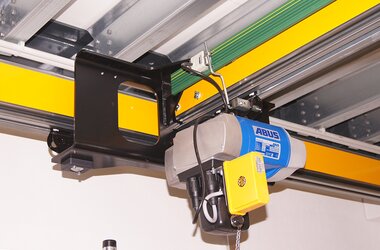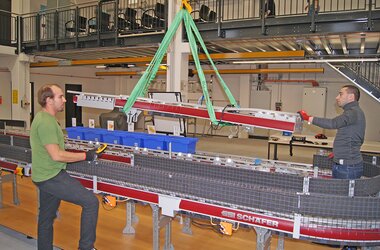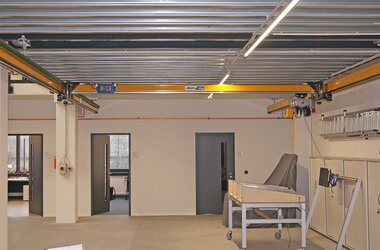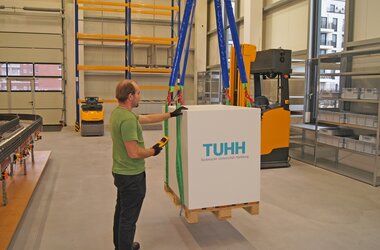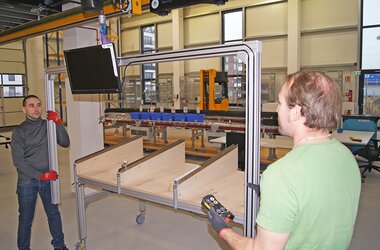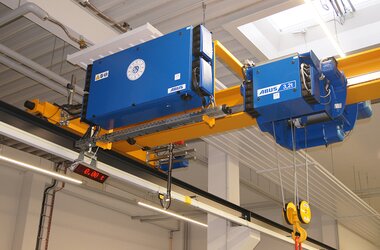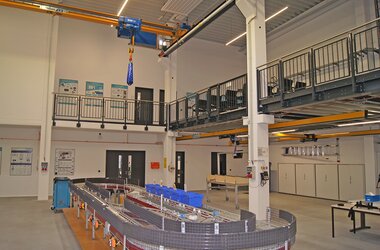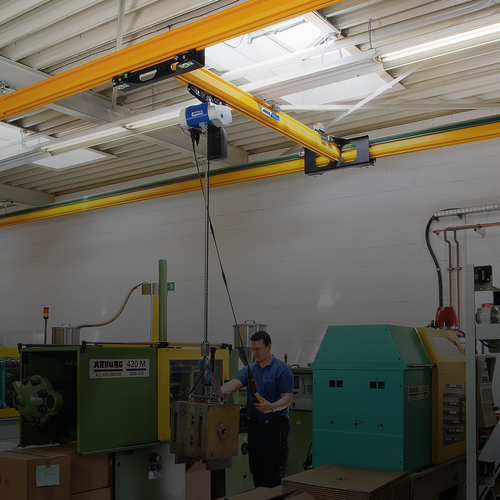Logistics in both corporate practice and academic research – ABUS cranes at the Technical University of Hamburg-Harburg, Germany
The disciplines of logistics as well as intralogistics deal with the organisation, control, and implementation and, what's more, the optimisation of the movement of goods and of material flows. The term “intralogistics” was coined in order to describe the material flow within a given production site and to differentiate between this and the movement of goods outside the factory site. Experts of both disciplines are continuously looking for new solutions in order to increase performance and to reduce costs. The Institute for Logistics Engineering ITL of the Technical University of Hamburg-Harburg trains new logistics engineers and carries out research for the industrial sector. One key element of teaching and research as well as of the implementation of innovation projects is the practical use and experience of modern lifting and transport technology and their integration into autonomous material flow systems in the industry 4.0. The new experimental hall of the institute—inaugurated and put into use in September 2017—houses crane technology you can touch. One EOT crane with intelligent ABUControl crane control and one suspended rail crane system assist the ITL with finding solutions for application-based and forward-looking questions of intralogistics.
Teachers and students have one single girder EOT crane type ELV with a lifting capacity of 3.2 tonnes and a span of 10.5 metres at their disposal to assist them with lifting and transporting loads across the entire surface of the experimental hall. Some of the technical features of the cranes include electronic track guidance along the crane rail, frequency controlled drives for crane travelling, hoist travelling and lifting as well as intelligent crane control ABUControl with sway prevention and electronic wheel flange guidance. This is how the electronic wheel flange guidance works: sensors measure the distance between the wheel flanges and the crane rails and the control keeps this distance constant independent of loads. Thus the wear of wheel flanges is reduced and the crane rails as well as the load-bearing understructure are preserved. The frequency converter control via ABUliner ensures infinitely variable acceleration and constant maintenance of the selected speed in all three movements: cross travelling, long travelling, lifting and lowering. The crane operator is thus able to approach loads, to lift and to deposit them in a very precise manner. In the experimental hall individual segments for example can be lifted out of the conveyor circuit and then deposited in an exact position elsewhere. The operating principle of the frequency converter control already provides a damping effect on load sway; however, the crane control ABUControl features an additional electronic anti-sway system. The control calculates the sway to be expected via mathematical algorithms that take such different parameters such as hook position, travelling speed and acceleration into account and then compensates this via corresponding movements in the opposite direction. This provides additional safety for less experienced crane operators who might not be able to estimate or to avoid the dangers emanating from swaying loads. The crane is operated via radio remote control ABURemote: the crane user can move freely when positioning his load exactly.
A further section of the hall underneath an accessible steel platform is used for smaller test setups. Here a suspended rail system is used as this area cannot be reached by the single girder EOT crane. The suspended rail system is based on a modular system design and may be adapted to nearly any spatial requirements, not least because of the different options for suspending and fixing the crane tracks. The crane track of the single girder EHB-X crane installed here is fixed on one side via clamps onto rolled section girders of the steel platform and on the other side directly onto the reinforced concrete ceiling via dowels. The very low overall height and the raised up crane ensure the optimal use of the available room height. The installed crane system has a SWL of 160 kg and uses an electric chain hoist. The electric chain hoist, too, features a frequency converter control to ensure very sensitive loads are moved precisely and smoothly: in this application HMI screens for example. In addition, a mechanical overload protection and an electronic hoist limit switch for the upper and lower hoist positions protect against potential danger or damage that may be caused by possible operating errors.
Theoretical and practical crane uses go hand in hand in the Institute for Technical Logistics. Teachers and students use the ABUS crane technology in a practical way when safely assembling or modifying their experimental arrangements. The theoretical part involves correlating different components from mechanics, electronics and informatics including the crane systems while working out technical solutions in logistics.

